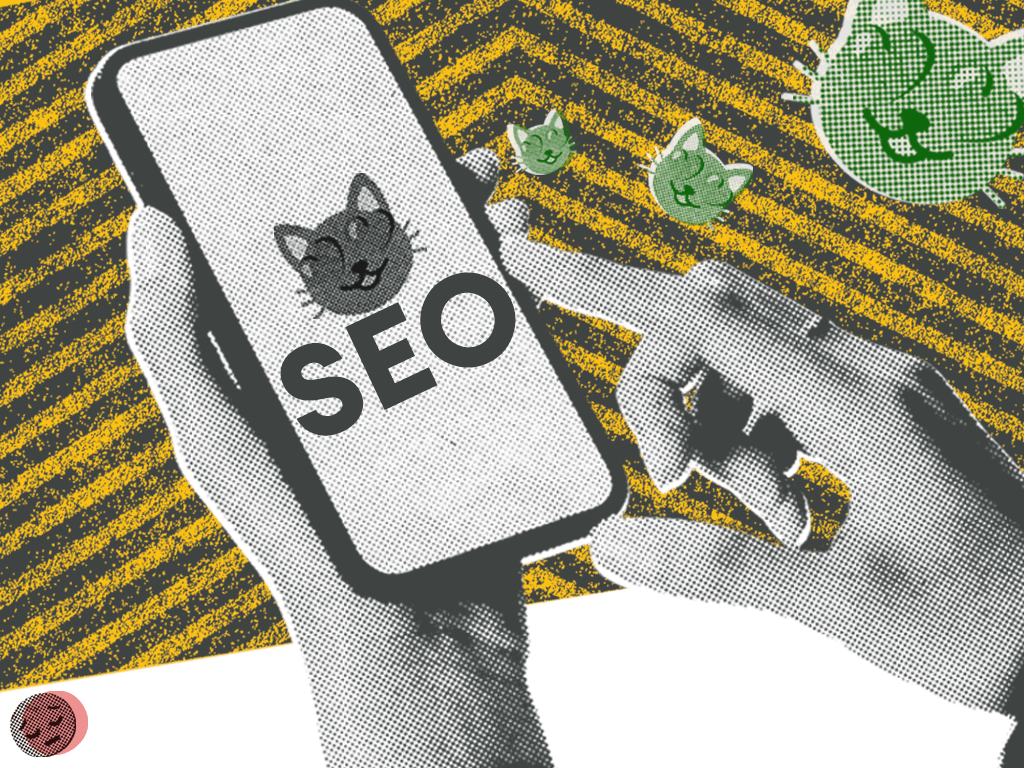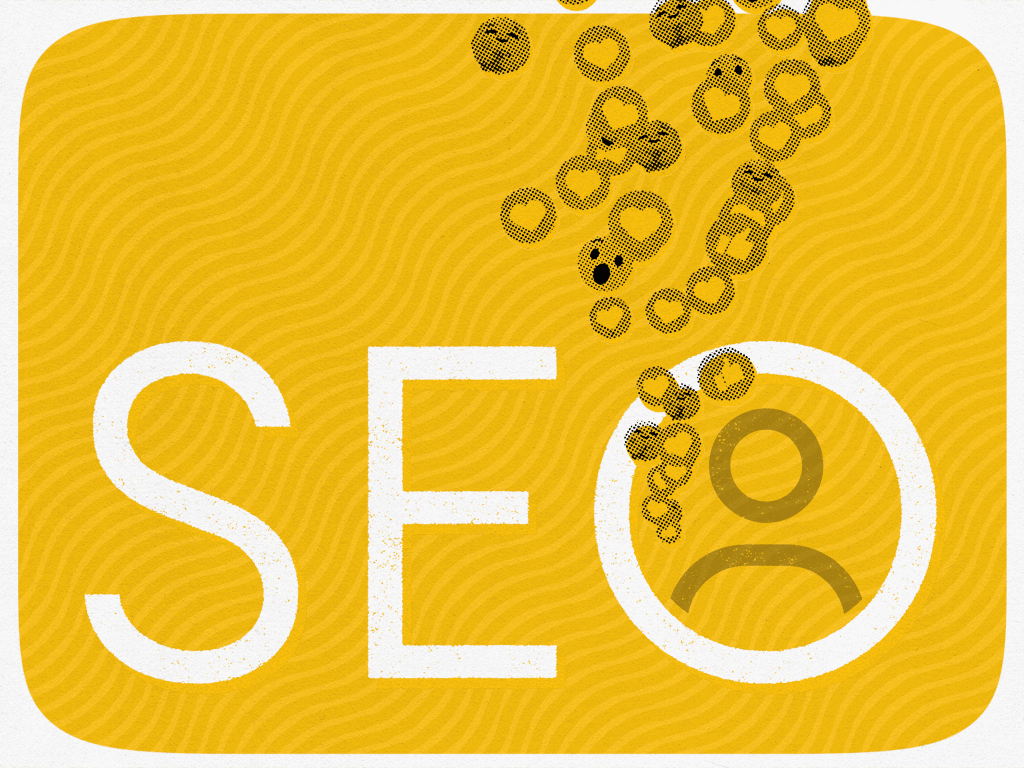Algorithms are inescapable. They have the power to influence, nudge, and sometimes even manipulate our choices. Algorithms curate social media feeds, direct us to products we don’t even know we need (but somehow do), recommend movies we are practically guaranteed to like, and, for many of us, dictate our search for the perfect romantic partner.
According to a recent Pew Research Center report, 3 in 10 adults in the U.S. admit to having used a dating app or site in their quests for love (or at least some kind of companionship). Just like Google’s algorithm sorts through billions of web pages to find the best answer to our most pressing questions, dating apps use hidden algorithms to curate your potential matches.
And many of the same factors that influence search algorithms also influence dating app algorithms. It’s totally possible to optimize your dating profile to find the best matches, just as you can optimize a website with SEO for the best rankings.
When two become one: Where search algorithms and dating app algorithms overlap
In technical terms, algorithms define a finite set of instructions executed in a predetermined order to achieve a desired result.
But in application, you might think of algorithms as the secret blueprints behind every search or swipe. Just like Google or Bing connect you to the information you need, dating apps, like Bumble and Hinge, are compasses for navigating a sea of potential partners. When an advanced algorithm is at the helm, instead of randomly riding the waves and going with the flow, data drives a curated path.
Whether you’re looking for a quick answer to a trivia question with Google or swiping through an app to find a Valentine’s Day date, here are some things to keep in mind to help you maximize the “perfect match potential” of any algorithm, from search engines to dating apps:
Gathering data
Just as search engines analyze your search history and preferences, dating apps collect information from your profile, behavior—likes, profiles viewed per session, swipes, messages—and even survey responses. This data, which would be considered engagement metrics in SEO, becomes their digital recipe for understanding your unique “type.”
Identifying patterns
Think of algorithms as pattern information investigators, always on the lookout for recurring themes. If you consistently swipe right on outdoorsy extroverts with healthcare careers, the algorithm takes note and adjusts your match pool accordingly. It’s like Google noticing you frequently look for hiking trails and medical journals, and then prioritizing those in your search results.
Prioritizing profile
Once patterns are identified, the algorithm takes charge of your potential matches. It’s like Google ranking web pages with quality content based on relevance and authority. In the dating world, this means profiles that align with your preferences get bumped to the top of your swiping deck, while those that don’t match your “type” fade into the background.
Constant learning and adapting
Algorithms aren’t static; they’re constantly evolving based on new data and user interactions. Each swipe, message, or profile visit provides feedback for the algorithm to refine its understanding of your preferences. It’s like search engines updating their algorithms to reflect changes in user behavior and search trends.
While each platform might have its unique approach, they all follow a version of these basic steps. And just like you can use SEO for social media algorithm success, you can also rely on similar search engine optimization techniques to find your perfect match on the dating app of your choice.
Organic magic: How to find love with SEO
The connection between dating apps and search engines goes beyond the algorithms. In fact, the processes of creating a dating app profile and optimizing a website for SEO have the exact same desired outcomes: to increase organic visibility and encourage action. Just like a business wants to see its products at the top of the SERPs, encourage clicks, and win conversions, the singles swiping on dating apps want to be on top of the stack, nudge potential matches to swipe right, and ultimately win a chance at love.
So, with these commonalities in mind, it’s time to consider using basic SEO practices to improve your dating app strategy. Here are some actions you can take to optimize algorithmic awesomeness, regardless of whether you’re working with a website or matters of the heart.
Learn more about SEO and other Integrated Digital Marketing Services from Tallwave.
Consider user and keyword intent
Successfully optimizing a website or a dating profile means understanding your audience and their unique intentions. If you’re seeking high-funnel customers (or more casual matches) who are just browsing, aim for broad and informational keywords to pique their interest in general. If you’re looking for customers (or potential partners) closer to conversion (or a relationship), more specific and transactional keywords might be a better choice to build momentum and encourage a journey with the end result in mind.
Use linguistic profiling to speak your audience’s language
Linguistics plays a huge role in how we consume content and how we form relationships. Google and potential partners both use latent semantic indexing to understand relevency, and this means you must share high-quality content worded particularly for your perfect match.
Let’s say you’re looking for someone who is a bit of a homebody, great conversationalist, creative in the kitchen, and shares an affinity for little white dogs. Consider using terms semantically related to these traits like “cozy comfort,” “witty banter,” “culinary artistry,” and “petite powderpuff pups” to further display relevancy and spark a playful exchange.
Create compelling content
High-quality content reigns supreme in SERPs and dating apps. Share authentic anecdotes that reveal your unique qualities in your dating app profile just as you would with value propositions on your website. Visuals and creative content count, too.
Stay active and online
Consistent engagement encourages both search engine rankings and dating app views. For dating app users, this means logging in frequently and replying to messages promptly. When it comes to website optimizations, this means regularly posting new content and encouraging crawlers.
End on a call-to-action
We all need a little push sometimes. Call-to-action (CTA) language is essential for guiding clarity and direction. CTAs provide clear instructions and next steps, guiding your audience toward the desired action, whether it’s buying a product, subscribing to a newsletter, downloading content, sending a message, or even asking for a date. Without a CTA, users might be left confused and unsure of what to do next, leading to missed opportunities.
Whether searching for love or online success, you can use SEO strategies to find your perfect match. Remember, a clear call to action is critical to converting that click into a connection.
Ready to fall in love with SEO success?
While Tallwave doesn’t usually offer dating advice, we have written digital marketing love stories and we help businesses find their perfect matches online with powerful, integrated solutions. Reach out for a consultation today. 💕




